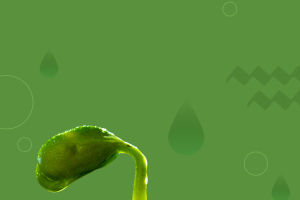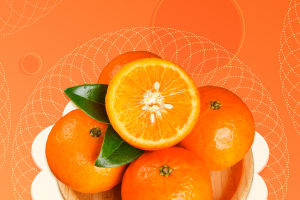A coffee bean is a seed of the Coffea plant and the source for coffee. It is the pip inside the red or purple fruit often referred to as a coffee cherry. Just like ordinary cherries, the coffee fruit is also a so-called stone fruit.
Even though the coffee beans are not technically beans, they are referred to as such because of their resemblance to true beans. The fruits; cherries or berries, most commonly contain two stones with their flat sides together. A small percentage of cherries contain a single seed, instead of the usual two. This is called a "peaberry". The peaberry occurs only between 10% and 15% of the time, and it is a fairly common (yet scientifically unproven) belief that they have more flavour than normal coffee beans. Like Brazil nuts (a seed) and white rice, coffee beans consist mostly of endosperm.
The two most economically important varieties of coffee plant are the Arabica and the Robusta; ~60% of the coffee produced worldwide is Arabica and ~40% is Robusta. Arabica beans consist of 0.8–1.4% caffeine and Robusta beans consist of 1.7–4.0% caffeine. As coffee is one of the world's most widely consumed beverages, coffee beans are a major cash crop and an important export product, accounting for over 50% of some developing nations' foreign exchange earnings. In 2017, 70% of total coffee production was exported, worth US$19.9 billion.
Everyone recognizes a roasted coffee bean, but you might not recognize an actual coffee plant.
Coffee trees are pruned short to conserve their energy and aid in harvesting, but can grow to more than 30 feet (9 meters) high. Each tree is covered with green, waxy leaves growing opposite each other in pairs. Coffee cherries grow along the branches. Because it grows in a continuous cycle, it’s not unusual to see flowers, green fruit and ripe fruit simultaneously on a single tree.
It takes nearly a year for a cherry to mature after first flowering, and about 5 years of growth to reach full fruit production. While coffee plants can live up to 100 years, they are generally the most productive between the ages of 7 and 20. Proper care can maintain and even increase their output over the years, depending on the variety. The average coffee tree produces 10 pounds of coffee cherry per year, or 2 pounds of green beans.
All commercially grown coffee is from a region of the world called the Coffee Belt. The trees grow best in rich soil, with mild temperatures, frequent rain and shaded sun.
There are some main types of coffee.
Arabica
Known as one of the most popular and well known types of coffee bean, Arabica beans are the most commonly produced variety and are considered higher quality beans. In fact, over 60% of the coffee beans in the world that are produced are Arabica variety.
These beans are grown at high altitudes and need to be in an area that has a steady rainfall and plenty of shade.
Perhaps one of the reasons that this is a variety of coffee bean that is seen the world over is because the trees are easy to care for, they are reasonably small and they are easy to prune too. Although they are delicate and can be affected by their environment. Arabica is both full of flavour and aroma.
Robusta
The next variety of coffee bean is Robusta, which is the second most produced in the world.
As the name hints, the Robusta bean is both hardy and is also immune to a variety of diseases too.
This type of coffee bean grows best in a hot climate with irregular rainfall and can grow at a number of altitudes too. Compared to Arabica beans, those that grow on the Robusta plant have double the amount of caffeine in them, meaning that they are an excellent choice for a real boost and offer a more harsh flavour.
The beans also have a smooth texture and it is often said that they even have a slight chocolate hint to them, which makes them ideal to have with milk and sugar (perhaps as an iced coffee).


